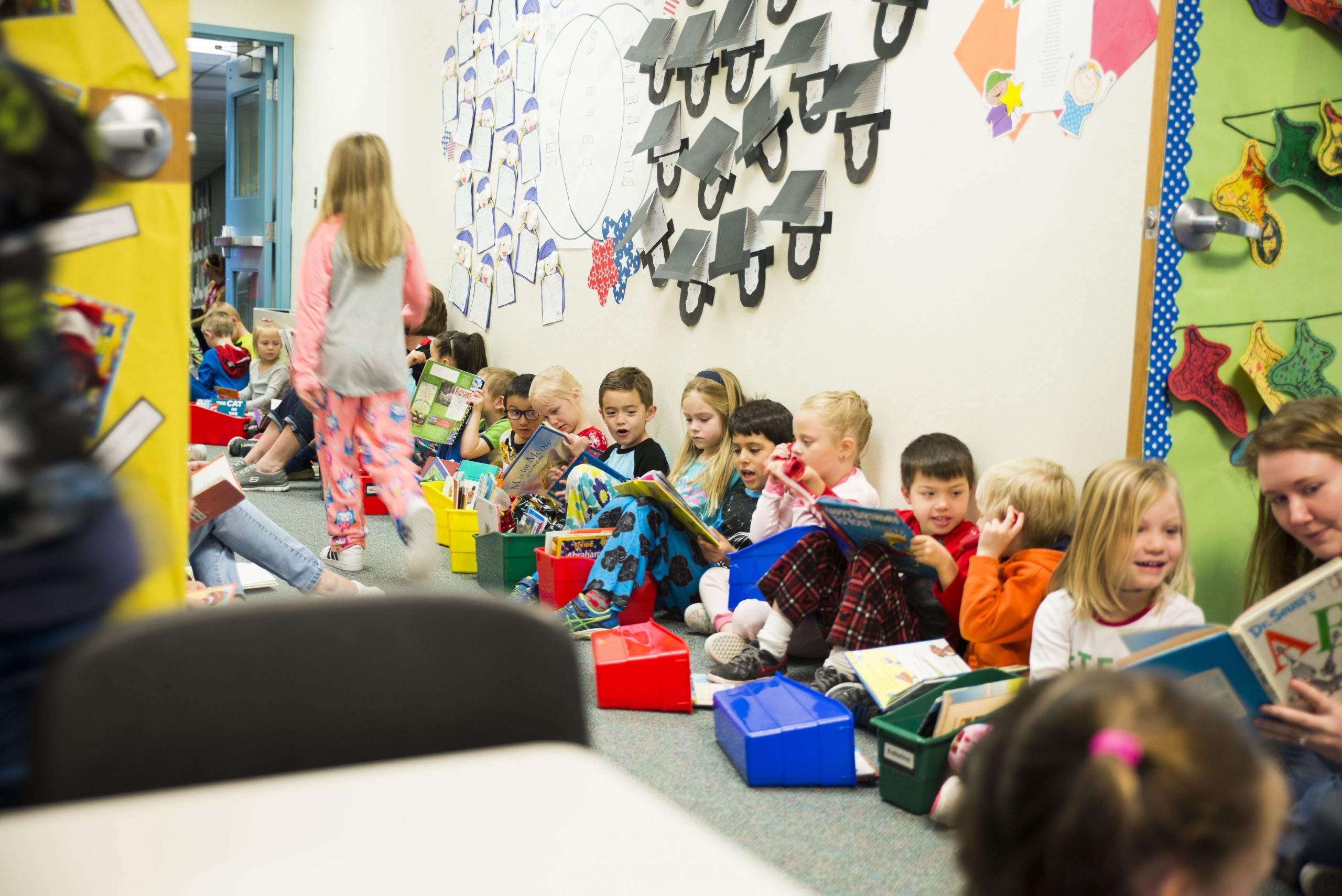At Mead Elementary, we provide several movement breaks a day. Incorporating movement breaks in the classroom can have a multitude of benefits across various aspects of students’ educational experience.
Refocusing
- Increased Blood Flow: Physical activity boosts blood circulation, which in turn increases oxygen flow to the brain. This can enhance cognitive functions such as focus, alertness, and overall brain performance.
- Stress Reduction: Movement helps reduce stress and anxiety by releasing endorphins, which can create a more relaxed and positive mental state, making it easier for students to concentrate on academic tasks.
- Mental Reset: Short breaks that involve physical movement can act as a mental reset, breaking the monotony and helping students return to their work with renewed attention and clarity.
Learning
- Enhanced Memory and Retention: Physical activity has been linked to improved memory function. Exercise stimulates the release of growth factors that help to create new brain cells and connections, which are critical for learning and memory.
- Faster Learning: Research indicates that after physical activity, students often show improved learning speed. This might be due to the increased levels of brain-derived neurotrophic factor (BDNF), which supports learning and higher thinking processes.
- Application of Knowledge: By breaking up learning with physical activity, students may find it easier to apply what they’ve learned in practical settings, enhancing their overall comprehension and application skills.
Engagement
- Motivation and Excitement: Movement breaks can make the learning experience more dynamic and enjoyable. This can lead to higher levels of intrinsic motivation, where students are more engaged and interested in the material.
- Active Participation: Incorporating movement can make lessons more interactive, encouraging students to participate actively, which in turn can increase their engagement and enthusiasm for learning.
- Positive Association: Students may develop a more positive attitude towards school when they see it as a place where they can have fun and move around, rather than just sit still for long periods.
Classroom Management
- Behavioral Benefits: Regular movement breaks can help in managing student behavior. Physical activity can help release pent-up energy, reducing restlessness and disruptive behavior.
- Structured Transitions: When movement breaks are implemented systematically, they can serve as structured transitions between different activities, making the classroom environment more orderly and predictable.
- Student Responsibility: Giving students the responsibility to lead or choose certain movement activities can empower them and create a sense of ownership and accountability within the classroom.
Positive Classroom Climate
- Community Building: Group activities during movement breaks can foster a sense of community and teamwork among students. This can help build strong, positive relationships within the classroom.
- Emotional Well-Being: Movement breaks can contribute to the emotional well-being of students by providing a physical outlet for stress and promoting a positive mood, which can create a more supportive and understanding classroom environment.
- Teacher-Student Relationships: When teachers participate in or facilitate movement breaks, it can help build stronger, more positive relationships with students, as they see their teacher engaging in fun and interactive activities alongside them.
In conclusion, movement breaks are a powerful tool that can support various aspects of the educational experience, from enhancing cognitive functions and learning outcomes to improving classroom management and creating a positive classroom environment. Integrating these breaks into the school day can lead to more focused, engaged, and happier students.



